#m-1
Text

Ranchers as Grant Wood’s American Gothic was supposed to be sillay and goofy but then I set the ranch on fire and one thing led to another and now it’s. sad DFBJDFGB I’m really happy with how this came out though, so!! Here’s my week 3 piece for the Hermitcraft Design Challenge thingie :]
#team rancher#tangotek#jimmy solidarity#solidarity gaming#SolidarityGaming#tango#double life smp#shepshermitdesign23#art escapades#tried something different and tried to be really loose with my painting in this :]#regarding the original—#ppl apparently saw the painting as an out of touch rural painting in a modern world#whereas wood intended to paint it as a positive portrayal of ideal rural living#so.#at some point the ranchers became m-1 ranchers and then this piece became a complicated commentary -#about everyone else seeing the ranchers as out of touch / removed from reality and the real world since their relationship was confined to -#double life#meanwhile ranchers themselves are happy with each other and see their relationship (despite the context/ the games) as an ideal one#m-1#anyway I’m fine thanks for asking#back to botwcast DGBJDFGB
5K notes
·
View notes
Text
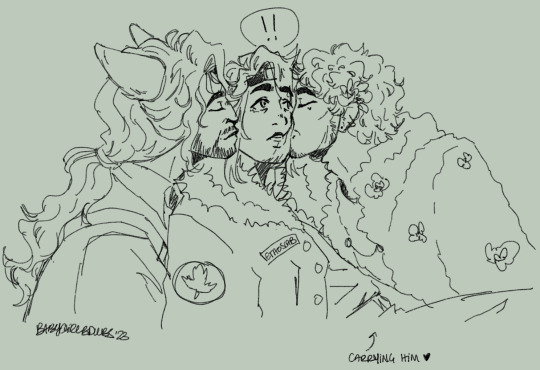
in honor of 300 followers, enjoy some renthubs
#spooky.art#hermitshipping#renthubs#i just think that they..... y'know?? yknow?????#etho deserves all the kisses always#it's just the truth#m-1
411 notes
·
View notes
Text
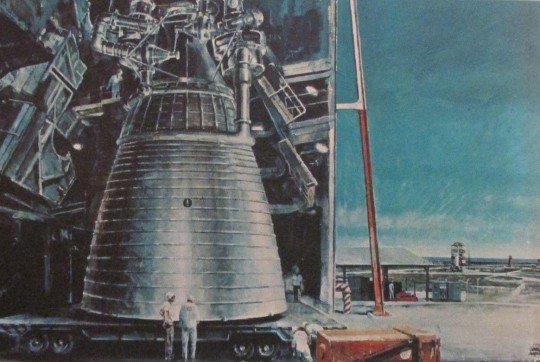
Concept Art of the Aerojet M-1 rocket motor, the largest designed and partially tested.
"The M-1 traces its history to US Air Force studies from the late 1950s for its launch needs in the 1960s. By 1961 these had evolved into the Space Launcher System design. The SLS consisted of a series of four rocket designs, all built around a series of solid-fuel boosters and liquid-hydrogen-powered upper stages.
The smallest model, intended to launch the Dyna-Soar, used two 100-inch (2,500 mm) solids and an "A" liquid core. To power the "A" booster, Aerojet was contracted to convert an LR-87, used in the Titan II missile, to run on liquid hydrogen. A prototype was successfully tested between 1958 and 1960. Initial studies of the 100-inch (2,500 mm) solid were also handed to Aerojet, starting in 1959.
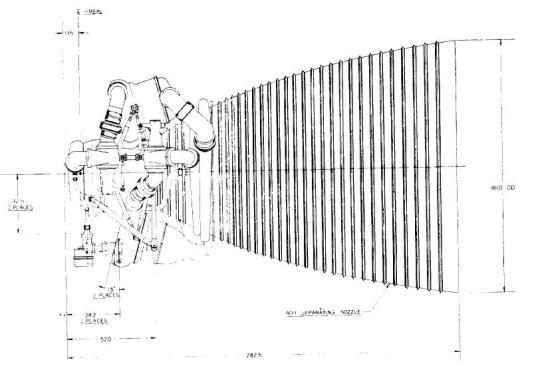
The SLS also envisioned a number of much larger designs intended to launch the Air Force's Lunex Project crewed lunar landing. Lunex was a direct landing mission, in which a single very large spacecraft would fly to the Moon, land, and return. In order to launch such a design to low Earth orbit (LEO), a very large booster with a 125,000 lb (57,000 kg) payload would be required. These larger SLS designs followed the same basic outline as the smaller Dynasoar booster, but used much more powerful 180-inch (4,600 mm) solids and the "B" and "C" liquid stages. To provide the required power, the liquid stages mounted a cluster of twelve J-2s. To reduce this complexity, the Air Force also had Aerojet start studies of a much larger hydrogen-fueled design that would replace the twelve J-2s with only two engines. These initial studies would eventually emerge as the M-1, with a thrust of 1.2 million pounds force.

When NASA formed in 1958, they also started planning for a lunar landing. Like the Air Force, their Project Apollo initially favoured a direct ascent profile, requiring a large booster to launch the spacecraft into LEO. Prior to NASA taking over Wernher von Braun's Saturn work for the US Army, they had no large rocket designs of their own, and started a study program known as Nova to study a range of options. Initially, the payload requirements were fairly limited, and the favoured Nova designs used a first stage with four F-1 engines and a payload of about 50,000 lb (23,000 kg). These designs were presented to President Dwight D. Eisenhower on January 27, 1959.
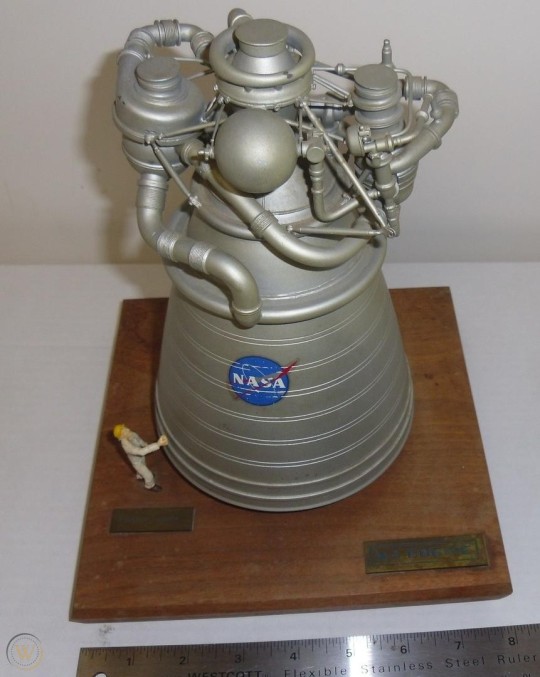

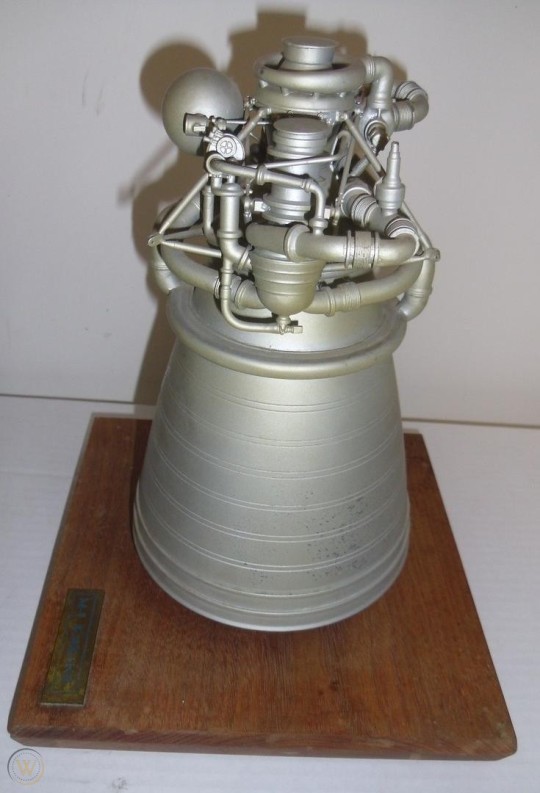
However, the Apollo spacecraft requirements quickly grew, settling on a 10,000 lb (4,500 kg) spacecraft (the CSM) with a three-person crew. To launch such a craft to the Moon required a massive 125,000 lb (57,000 kg) payload to LEO. Nova designs of this capability were quickly presented with up to eight F-1 engines, along with much more powerful upper stages that demanded the M-1 engine. Thus, for a brief period, the M-1 was used on the baseline designs for both NASA's and the Air Force's lunar programs.
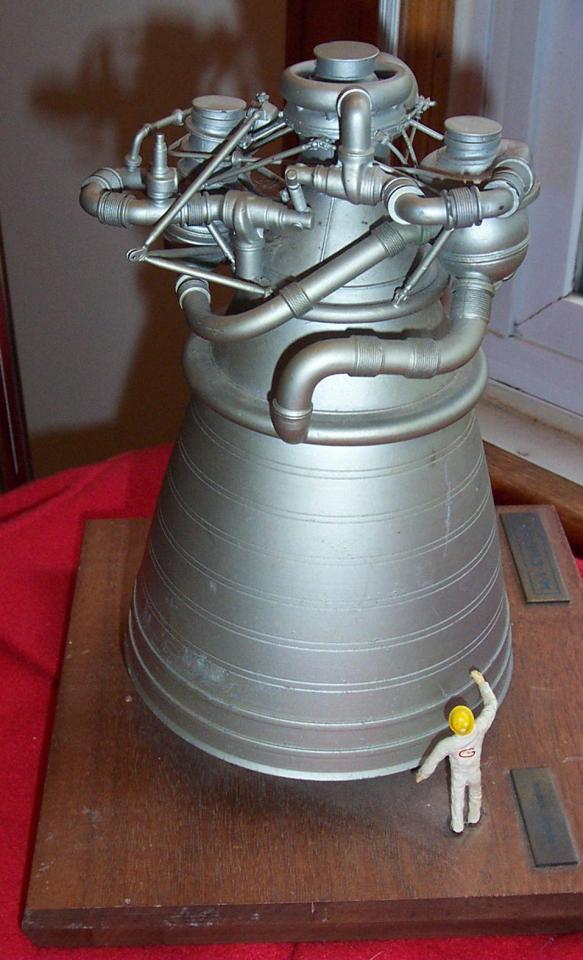
In 1961, President John F. Kennedy announced the goal of landing a person on the Moon before the decade was out. After a brief argument, NASA won the mission over the Air Force. However, Nova would require massive manufacturing capability that did not currently exist, and it was not clear that booster construction could be started in time for a landing before 1970. By 1962 they had decided to use von Braun's Saturn V design, which went through a process of re-design to produce a usable booster that could be built in the existing facilities at Michoud, Louisiana.

Uprating thrust, then cancellation
With the selection of Saturn for the lunar missions, work on Nova turned to the post-Apollo era. The designs were re-targeted for crewed planetary expeditions, namely a crewed landing on Mars. Even utilizing a lightweight mission profile like that selected for Apollo, a Mars mission required a truly massive payload of about one million pounds to low Earth orbit. This led to a second series of design studies, also known as Nova, although they were essentially unrelated to the earlier designs.
Many of the new designs used the M-1 as their second-stage engine, although demanding much higher payloads. In order to meet these goals, the M-1 project was uprated from 1.2 million pounds force to a nominal 1.5 million pounds force, and the designers deliberately added more turbopump capability to allow it to expand to at least 1.8 million and potentially up to 2.0 million pounds force. Additionally, the M-1 was even considered for a number of first-stage designs, in place of the F-1 or the 180-inch (4,600 mm) solids. For this role the specific impulse was dramatically reduced, and it appears that some consideration was given to various expanding nozzle designs to address this.
M-1 development continued through this period, although as the Apollo program expanded, NASA started cutting funding to the M-1 project in order to complete Saturn-related developments first. In 1965, another NASA project studied advanced versions of the Saturn, replacing the cluster of five J-2s on the S-II second stage with one M-1, five J-2Ts (an improved version of the J-2 with an aerospike nozzle), or a high-pressure engine known as the HG-3, which would later become the direct predecessor of the Space Shuttle's SSME.
By 1966 it was clear that present funding levels for NASA would not be maintained in the post-Apollo era. The Nova design studies ended that year, and the M-1 along with it. The last M-1 contract expired on August 24, 1965, although testing continued on existing funds until August 1966. Studies on the J-2T ended at the same time. Although the HG-3 was never built, its design formed the basis for the Space Shuttle Main Engine.

The final report (1966) found:
The feasibility of all major M-1 Engine components, except for the cooled chamber and the gas-cooled skirt, was demonstrated.
Performance data were obtained and the mechanical integrity was established for the injector, the fuel turbopump, the oxidizer turbopump, and the gas generator assembly. Also, it was established that these components are satisfactory for use in a demonstration engine.
Prototypes
Over the three-year lifetime of the project, a total of eight combustion chambers were built (two of them uncooled test units), eleven gas generators, four oxygen pumps, as well as four hydrogen pumps that were in the process of being completed.
Scaled down models of the pumps were used during design/development to 1963."
-Information from Wikipedia: link
source
46 notes
·
View notes
Video
memories (2492)B by soyokaze ojisan (そよ風)
Via Flickr:
Olympus M-1 ZUIKO28mm/f3.5 TriX ASA800 コニド-ルファイン1:1 OpticFilm8200
#Japan#city#Street#people#BW#blackandwhite#Monochrome#mono#analog#analogue#OLYMPUS#M-1#28mm#film#TriX#kodak#1970s#memories#昭和#flickr
17 notes
·
View notes
Text
Mansour Barnaoui sweeping dudes for like a minute
Barnaoui fight week!
Really happy Bellator signed Mansour Barnaoui. Man is SLICK off his back. Absolute menace with the sweeps. One of a handful of guys who was able to push Islam Makhachev on the mat.
26 notes
·
View notes
Text

#Cyborg Kuro Chan#Cyborg Kuro-Chan#Cybercat Kuro-Chan#Cybercat Kurochan#Kuro-Chan#Kurochan#Kuro Chan#Kuro#Mi#Mi-Kun#M-1#my art#my artwork
10 notes
·
View notes
Text
Yu Yu Hakusho GENKAI Battle Spirit
Part 5
Team Dr. Ichigaki




Team Mashoutsukai

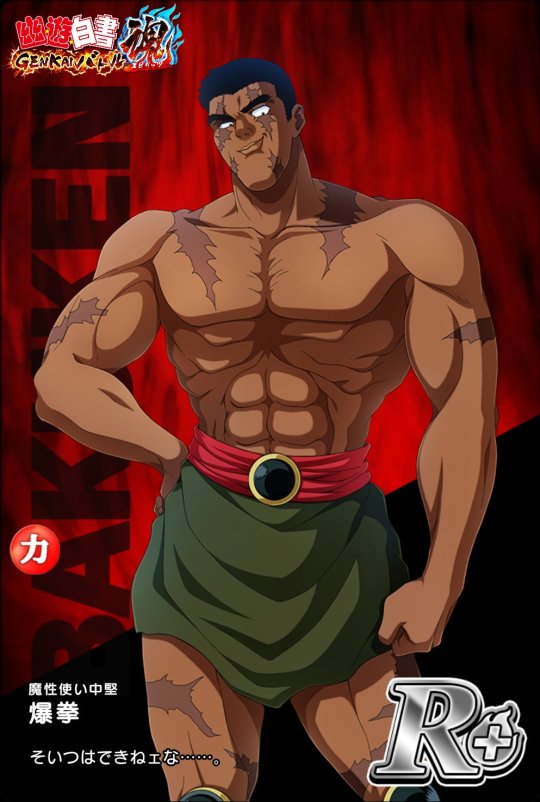




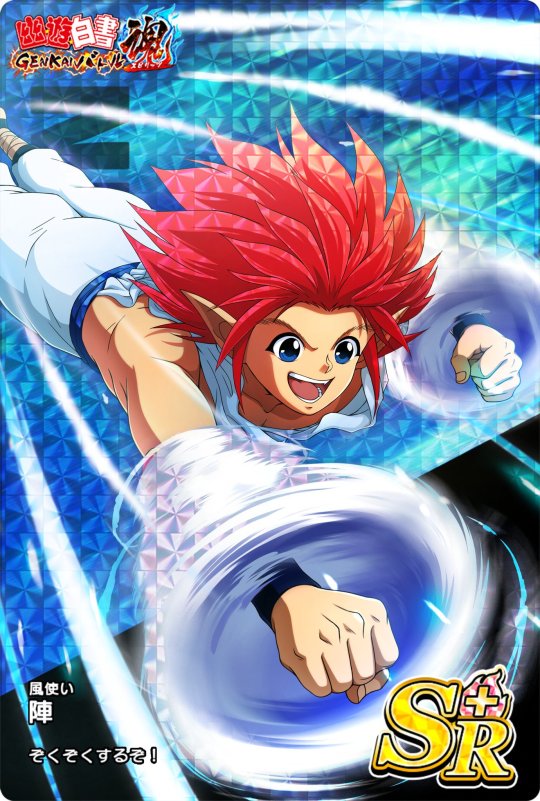

Team Uraotogi






#Yu Yu Hakusho GENKAI Battle Spirit#Part 5#Dark Tournament#Team Ichigaki#Dr Ichigaki#En#M-1#M-2#Ryo#Kai#M-3#Team Mashoutsukai#Gama#Bakuken#Touya#Jin#Risho#Team Uraotogi#Makintaro#Kuromomotaro#Uraurashima#Shishiwakamaru#Onji#Beautiful Suzuki
28 notes
·
View notes
Text
平均的に無難に点数をつけるより、点数に差を付けて評価した方が��の人の好みや視点が見えて面白いよね。いやほんとお笑いの審査員て難しい立場だわ
1 note
·
View note
Text
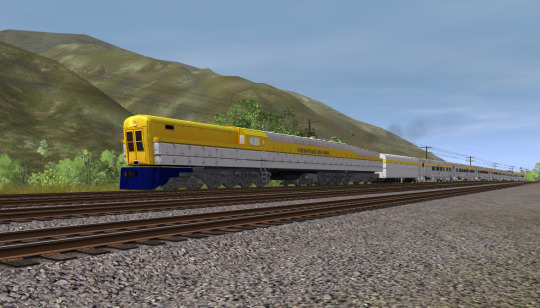
As we all know, the Chessie streamliner sadly never entered service for numerous reasons. But in our imaginations, we can depict about what it would be like for if the train did end up entering revenue service. Here along the New River Gorge somewhere between Prince and Hinton, West Virginia, a Chesapeake & Ohio M-1 thunders along the Hinton Division while leading the Eastbound Chessie to Washington D.C. on a peaceful Summer afternoon.
Models and Route by: Roloz Trainz, K&L Trainz, Auran, and Download Station.
#C&O#Chesapeake & Ohio#Chesapeake & Ohio Railway#Chesapeake & Ohio Railroad#Chessie#Chessie Train#Streamliner#Streamlined Trains#M-1#Chesapeake & Ohio M-1#C&O M-1#Steam Turbine Locomotive#Trains#Trainz Simulator
1 note
·
View note
Text
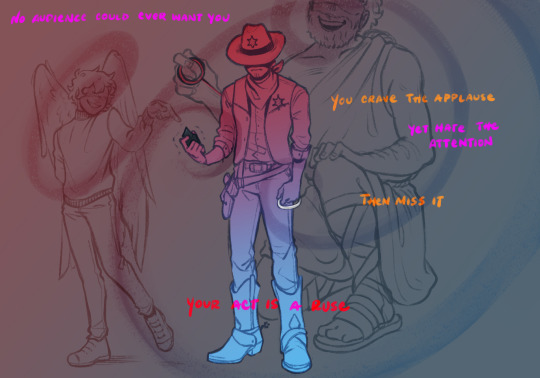



I started putting together a playlist for m-1 jimmy, which means I’ve started thinking… a lot about empires jimmy. I’ve always had far too many emotions about how jimmy’s treated, but finally putting it to music has done irreparable things to me, I think. So anyway… some drawings to Gang of Youths’ Achilles Come Down.
The hardest thing about drawing to this song was finding characters who would could reasonably represent the verses of the song that are supposed to be encouraging and loving. So. Take that as you will.
#jimmy solidarity#empires smp#team rancher#tangotek#grian#joel smallishbeans#smallishbeans#esmp#empires#tango#solidarity gaming#jimmy#inthelittlewood#itlw#Martyn#solidaritek#I’m so not okay about jimmy solidarity hope that’s obvious#art escapades#m-1#m-1 jimmy#technically#empiresblr#hc x empires#empires hermitcraft crossover
4K notes
·
View notes
Note
Rendubs for the ask game plss

maybe i do think that they should be allowed to retire to a cottage in a flower forest together and harvest wheat in the early morning light
ask game: x
#spooky.asks#spooky.art#hermitshipping#rendubs#bdubs#rendog#bdoubleo100#yes bdubs is in a corset he deserves it#also ren is wearing a flannel i stg i just am way too lazy to add patterning to the sketch#and YES that is the clock etho gave him that bdubs has#we do be implying renthubs in this house#m-1
268 notes
·
View notes
Photo

“Youse got nuthin’ on me, Ultraman! I was framed, see? Nyah! Nyah!”
Everyone’s favorite artificial life form - and Edward G. Robinson impersonator - M-1!
13 notes
·
View notes
Text
youtube
Guram Gugenishvili Tribute
July 23, 1986-November 11, 2014
Don’t know why but randomly thought of Guram Gugenishvili (11-2) the other day. For fans who didn’t watch M-1 from like 2011~2016, M-1 was a hotbed of heavyweight talent. With Fedor’s reputation boosting them and limited options for fights outside of Russia, they had created a whole system of talented MMA fighters from in and around Russia. Guys like Sergei Kharitonov, Aleksei Oleinik, Maxim Grishin, Alex Emelianenko, Jeff Monson, Konstantin Glukhov, Damian Grabowksi, Shamil Abdurakhimov, Denis Smoldarev, Marcin Tybura, Alexei Kudin, Ante Delija, and Kenny Garner all competed in the promotion in those years. Some of those names are probably still really familiar to you now, as they’re still relevant.
But one of the top prospects to emerge from that era was Georgian fighter Guram Gugenishvili. In fact, Bloodyelbow had him as the #1 heavyweight prospect in the world at the time. Ahead of STIPE MIOCiC. He was, at one point, the M-1 heavyweight champion and kind really blew up in notoriety for his trilogy of fights with Kenny Garner.
6 notes
·
View notes
Photo

21/05/23 edit: heres the full gifset
#shigeru miyamoto approved this :V#okay so now i gotta do a bowigi gifset once the movie comes out#what else...#1. peach gifset cause shes the cutest#2. game-movie comparisons still hoping we get a paper mario shoutout#3. mario and luigi being brothers in movie and other games#4. and now bowuigi apparently jdhkfhsjhk#s.og#s.gif#c#m#smb#mario movie#the super mario bros movie#nintendo#bowser#luigi#bowuigi#nintendoedit#edit: this is getting way much more attention that anticipated jdsfdshfdks#i just went back to the trailer and i missed the shy guys doing the head tilt thing#if this passes 5k and reblogging that addition#second edit: 50k notes later.... insane :v#anyways i linked the full-ish gifset#tumblr staff please increase the max gif size to 15mb. just do that delete tumblr live and do that please
56K notes
·
View notes
Text

we did it
7K notes
·
View notes
